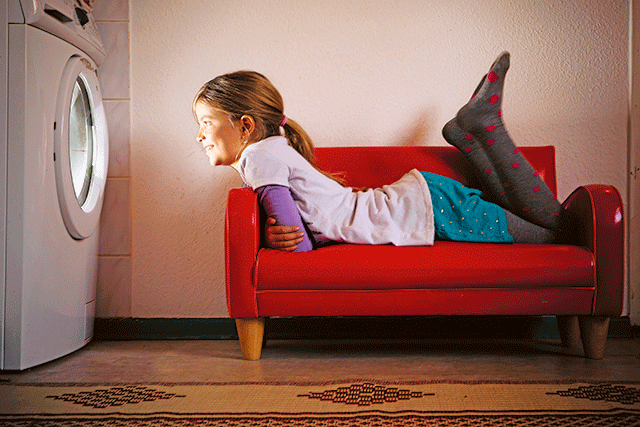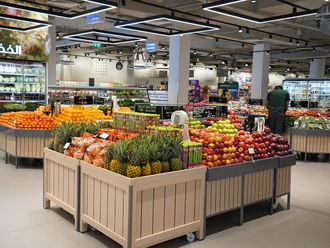From sleek steam ovens that promise to preserve all nutrients, to air conditioners with filtration technologies that remove airborne allergens and bacteria, the focus on health and well-being is paramount.
“Consumers today are more health-conscious than ever before. As they make healthier choices, this is reflected prominently in their purchases of home appliances,” says Mahesh Chotrani, Assistant Vice-President, Jacky’s Electronics. “For instance, in small domestic appliances the focus has shifted from products such as deep fryers, to air fryers and steamers.”
Booming business
In fact, home appliances is the only category where there’s been less price erosion. Over the past five years there has been a steady growth in the appliances business, adds Chotrani. “The outlook for 2015-16 is optimistic as changes in technology, design and a focus on health drive the market.”
A 2014 study by Transparency Market Research (TMR) forecast that the global household cooking appliances market will grow at a healthy compound annual growth rate of 29.1 per cent from 2012 to 2018. TMR, a market intelligence firm based in the US, said that the market was valued at $56.6 billion (Dh207.9 billion) in 2012, and will surge to $79.8 billion by the end of 2018.
According to latest data by Euromonitor International, a London-based market intelligence firm, the home appliance segment in the UAE witnessed an average household spend of $350. Though the UAE is the smallest market in absolute sales volume in the region, it is expected to see an annual growth rate of 7 per cent between 2014 and 2019, putting it among the top ten countries in terms of volume growth.
Last year alone saw 2.94 million units of consumer appliances sold in the country, which is expected to reach 3.2 million by year-end and four million by 2019, reports Euromonitor International. Of these, health-oriented appliances are showing a positive trend with 14,800 juice extractors sold in 2014 — a number that’s expected to grow to 17,600 units this year. Similarly, electric steamers clocked up sales of 19,800 units last year, and in 2015 are expected to reach 25,800 units and by 2019 it’s estimated to be more than 50,000 units. Electric grills and electric steamers showed an average growth of 30 per cent in 2014, a trend that’s expected to continue for 2015-16 as well.
Every year presents interesting patterns in terms of consumer buying trends and innovations, said Georg Kazantzidis, Director — Marketing and Business Development, Bosch Home Appliances UAE, in a recent press release. Kazantzidis believes there is an increasing awareness among consumers in the UAE, who are more knowledgeable about technological specifications of products, and base their decisions on the overall value offered, whether in terms of superior performance, energy efficiency or the added wellness benefits.
Market trends
The overwhelming presence of food across media from reality cookery shows to celebrity chefs and glossy food magazines, has helped transform our kitchens from functional places to creative powerhouses, inspiring millennials to cook and eat healthier. A direct consequence of this trend has been the enormous growth in small kitchen appliances beyond kettles and toasters to food processors, liquidisers, juicers, grillers, steamers and multifaceted kitchen machines.
Other macroeconomic factors that have influenced food and cooking, as well as impacted our outlook on health and well-being, include a greater percentage of disposable income and heightened consumer awareness. This means that when it comes to appliances, the market is driven by a need for energy-efficient and easy-to-maintain household cooking apparatus that are fitted with advanced features, as well as appliances that deliver a better quality of life.
“Food plays the most important role in the health and well-being of an individual,” says Chotrani. “Consumers want their food healthier with less time and energy involved. Thus there is a high demand for no-fuss appliances that are easy to use and do not take up much of their time, yet provide healthy options in a fast-paced life.
“The most popular appliances would be the Philips Air Fryer, the Fat Free Grillers and Toasters from Kenwood and Bosch as well as the Philips and Braun soup-makers.”
Well+Good, a popular New York-based lifestyle and news publication, predicts 2015 will be the year for juicing. Juices are no longer one-size-fits-all and soon there will be a juice for everyone. Brands and pop-up juice bars are offering products that cater to various demographic and age groups from men and children to pregnant women and college students.
The healthy trend isn’t only restricted to kitchen gadgets but also a host of home appliances that fall into the toxic avengers category. International forums are putting emissions and toxicity back on the agenda, but it’s the threat to humans rather than the environment that’s driving technological innovation.
There is a growing level of consumer consciousness about how urban pollution and fine particulate matter can impact overall health, ageing skin and dulling hair to trigger asthma and other respiratory-related issues.
“Consumer buying decisions are now increasingly determined by the value the products bring to them, not just in terms of financial benefits, but also considering the functionality of the product,” says Anil Pillai, Head — Appliances, Jumbo Group.
“In the home appliances segment we are seeing buyers shift from price comparisons to benchmarking the environmental and physical impact of the products.” The air conditioning and purification systems are good examples in this respect.
“With the incidence of respiratory health problems in a desert [country], consumers prefer to use products that have filters that keep the air clean of allergens and impurities. Air conditioners such as the Supra Aura, with Vitamin C filters and ionization capabilities, are a top choice for consumers,” adds Pillai. Other products preferred for their health benefits include Dyson’s bagless vacuum cleaners, which sweep up even the smallest particles from dusty surfaces.
There are also the high-quality stovetop hoods from Gorenje, which have a strong market share in the UAE where most homes have limited air ventilation in the kitchen, says Pillai.
Don’t be in a spin!
The latest advice on health and well-being can leave you going around in circles. We’ve asked the experts about the gadgets that get results













